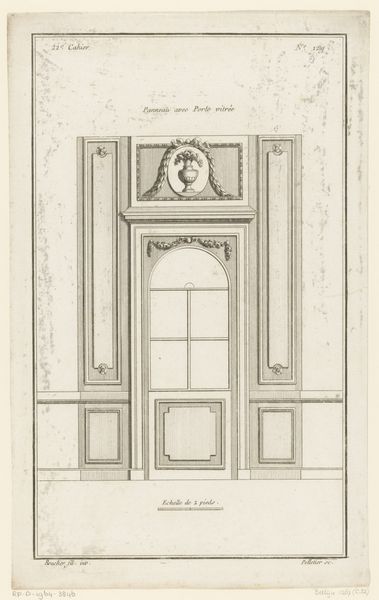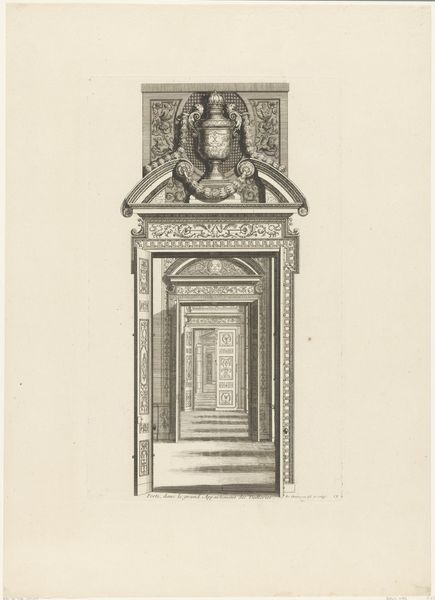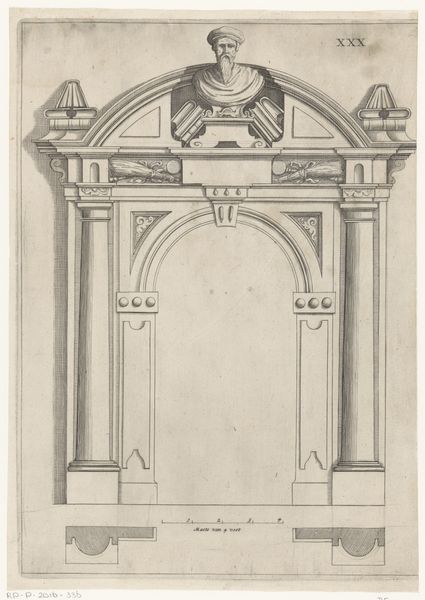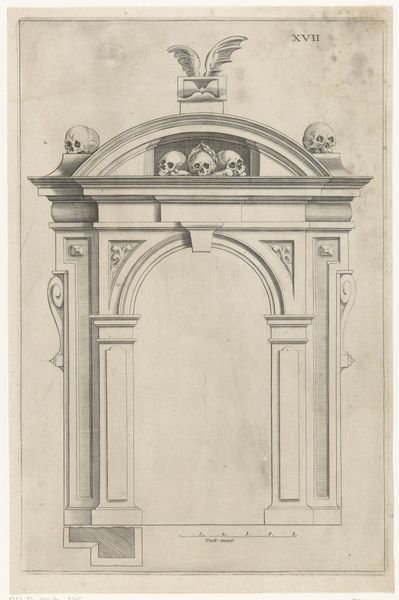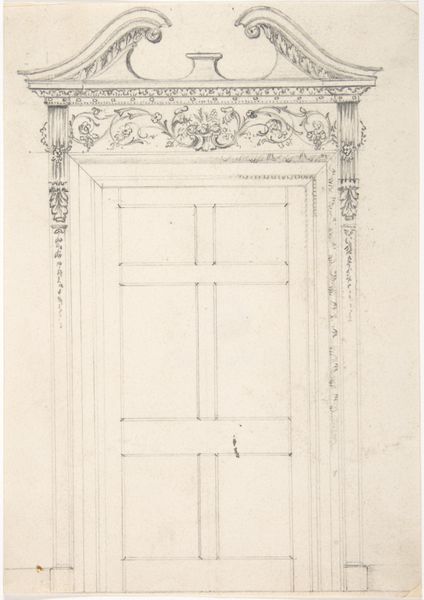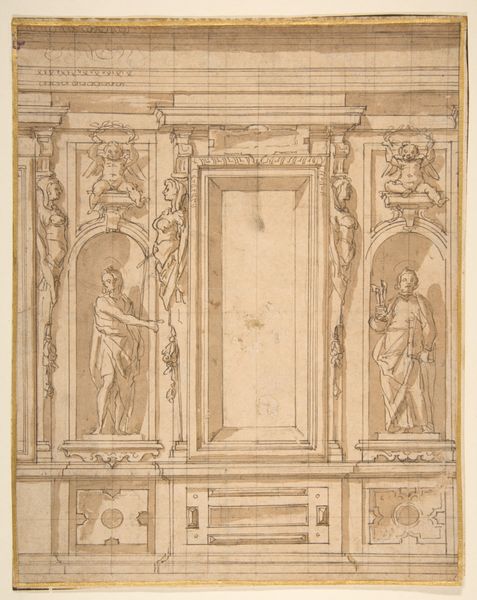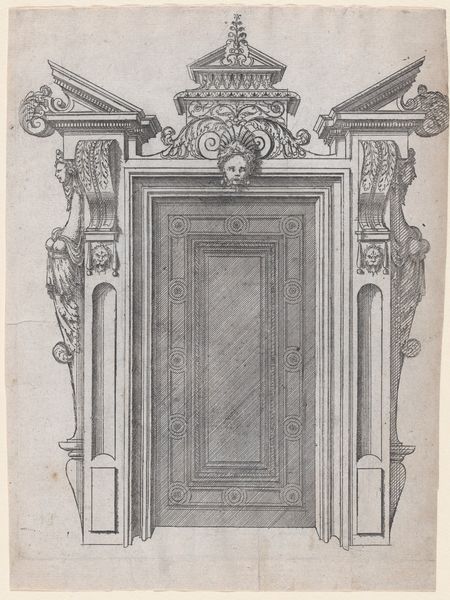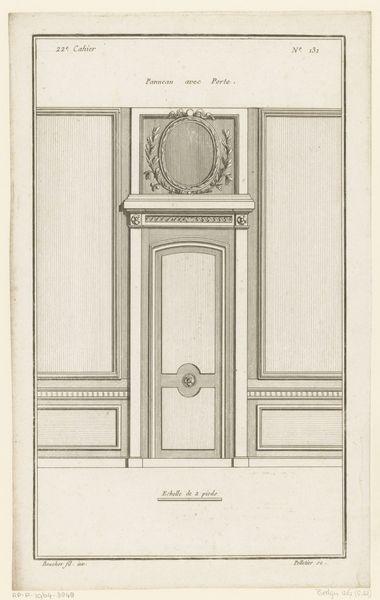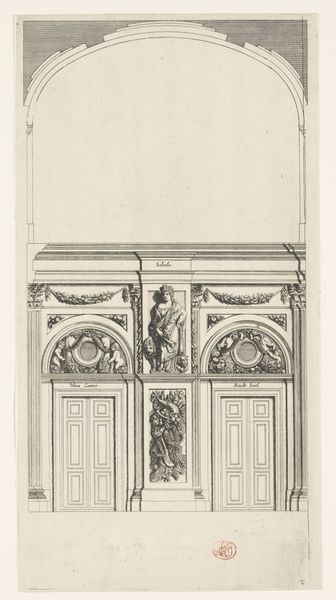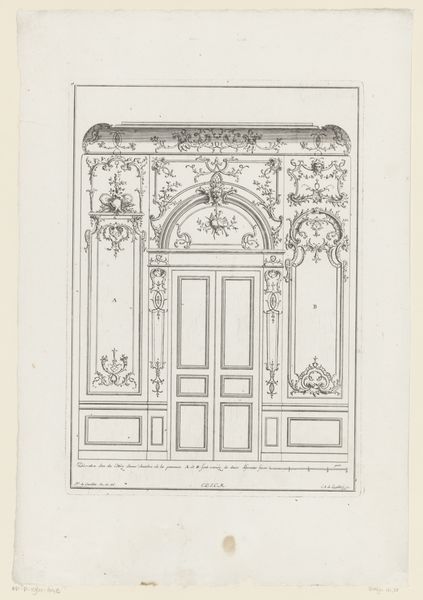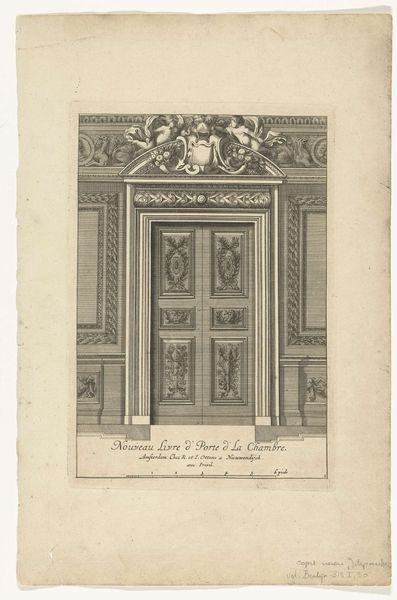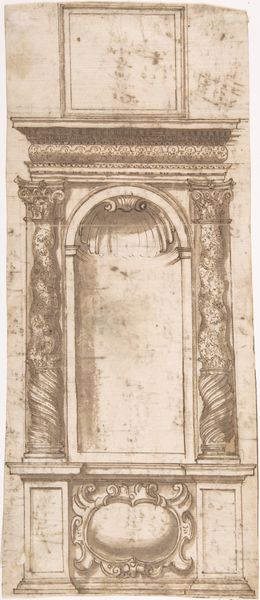
drawing
#
drawing
#
etching
#
figuration
#
form
#
11_renaissance
#
history-painting
#
academic-art
#
italian-renaissance
Dimensions: 15 11/16 x 14 in. (39.85 x 35.56 cm) (outer frame)9 1/2 x 7 7/8 in. (24.13 x 20 cm) (sight)
Copyright: Public Domain
Editor: Here we have Jacopo Zucchi's "Design for a Wall Decoration," made around the 1570s. It's a drawing, and there's something about the crisp lines that makes me think about classical architecture. What stands out to you when you look at it? Curator: For me, it's all about the materiality. Think about what it meant to produce a drawing like this in the late Renaissance. It wasn't just about aesthetic beauty, it was about skilled labor and access to resources. The paper, the ink, even the time required to create this level of detail—these speak volumes about the patron's wealth and the artist's place in society. Editor: So you're saying it’s as much a product of the social system as it is of Zucchi's talent? Curator: Precisely! Consider the division of labor implied. Did Zucchi prepare his own pigments? Who sourced the paper? The consumption habits embedded within the image are tied into the politics and class structures of the time. The idealized forms are masking production and material concerns. Editor: It makes you wonder about the function of this design, too. Was this actually commissioned, or more speculative, meant to showcase his skill? The etching is clean, so he seems adept. Curator: That's right. Understanding the etching technique provides more meaning and context to its production. Etchings are reproducible; what did mass production in Renaissance workshops look like? This adds to my curiosity around labor practices during the period. How does this image challenge conventional ideas about “high” art? Editor: I never really thought about drawings as having so much embedded economic information. It shifts my perspective. Curator: Seeing art as the product of tangible labour and economic relations adds new depth. Now, we understand that consumption is also inherent to the artist and his process.
Comments
minneapolisinstituteofart about 2 years ago
⋮
Trained in Florence under Giorgio Vasari, Jacopo Zucchi spent most of his career in Rome working for members of the Medici family in residence there. This architectural drawing is for an unknown decorative project; the coat-of-arms above the doorway, with the six balls or palle of the Medici, indicates it was executed for them. It was probably a proposed design for a gallery in the newly acquired Villa Medici on the Pincian Hill in Rome, where Zucchi worked on several projects. Of the thirty or so drawings attributed with reasonable security to Zucchi, many are decorative architectural drawings such as this one.
Join the conversation
Join millions of artists and users on Artera today and experience the ultimate creative platform.
